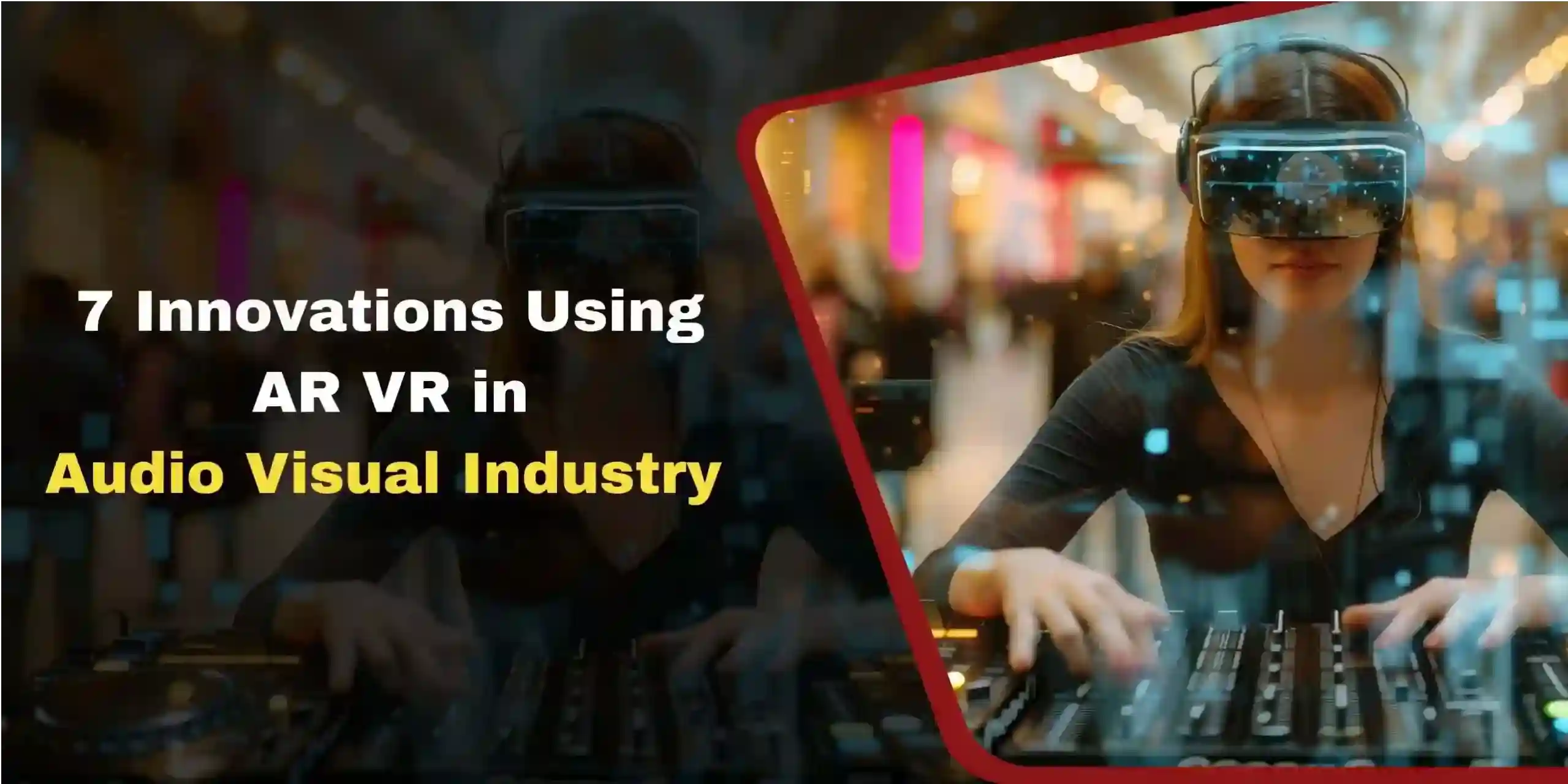June 25th, 2024
Category: ar vr,augmented reality,virtual reality
No Comments
Posted by: Team TA

Immersive experiences are reshaping the audio video (AV) industry, blurring the boundaries of imagination and what is possible to create dynamic, engaging environments. AR and VR technologies have enhanced the way content is created and consumed. Initially, they were considered novelties, mostly used in gaming and entertainment. However, their use in AV solutions has become more prevalent as the technology develops. The AR and VR market is projected to generate revenue of $40.4 billion by 2024 and reach $62.0 billion by 2029, according to Statista. The applications of AR and VR in the audio visual industry span various areas with some overlap.
The fully immersive feature of VR creates a controlled environment where the elements can be manipulated. This is useful for virtual architectural walkthroughs, immersive training simulations, and other interactive events. In AV design, AR enables the projection of digital mockups onto physical spaces. This improves live performances with holographic features and facilitates real-time collaboration and changes in design projects.
7 innovative ways of AR and VR in the Audio Visual industry
1. Immersive Storytelling in Filmmaking
The audience is just a spectator in traditional 2D or 3D movies, but with VR/AR technology, the audience participates actively. VR/AR has always been highly versatile as a cross-regional and cross-industry medium. VR technology may replicate the senses of sight, sound, and touch when used in the context of film, allowing viewers to experience a realistic virtual environment.
However, VR/AR movies lack a mature narrative logic and camera language model. Additionally, there are still very few filming equipment that can meet the requirements of the film level, which are some of the reasons why they are not yet widely popularized.
2. Virtual Concerts and Music Experiences
Virtual reality has been adopted by the music industry to provide fans all around the world with access to live concerts and music experiences. VR can take consumers to a recording studio or replicate extreme concert settings, giving them access to a completely immersive music experience right from their living room. Users can virtually attend live concerts from the comfort of their homes with platforms like MelodyVR and Oculus Venues, giving them a front-row experience.
AR capabilities could offer more than just a virtual reality concert experience. These could include animated effects like fireworks going off on stage, weather changes, or even changes in the musician performing.
3. VR Training and Simulation for Professionals
VR headsets are being used in the AV industry for training and simulation purposes. Professionals in fields ranging from audio production to video editing can use virtual reality (VR) to practice in a simulated setting. This immersive training program improves competency and creativity in audio-video production through realistic settings and hands-on learning.
4. AR Music Apps
With AR music apps, users can explore music in new ways by overlaying digital elements onto the physical world. Firstage is one interesting app that makes use of AR to offer virtual live performances of bands and musicians at your fingertips. It’s a thrilling way to see your favorite musicians perform live without the crowd.
The field of music education has also noticed the impact of augmented reality. Beginners learning to play the piano can have an immersive learning experience with apps like Music Everywhere, which use AR technology. AR gives musicians creative methods to advertise forthcoming shows or new albums. Through specialized apps, fans can scan posters, record covers, or QR codes to access immersive promotional content such as behind-the-scenes footage, exclusive interviews, or sneak-peaks of unreleased tracks.
5. Enhanced Post-Production Tools
Virtual reality (VR) allows post-producers to work on 360º projects, edit videos, and create immersive soundscapes. It also provides new tools for visualizing and working within the color production process, resulting in higher-quality outcomes and enabling the creation of previously impossible visual effects and graphics. A more real and immersive experience for the viewer is achieved with this technology.
Virtual reality and augmented reality are transforming content editing and viewing by allowing for personalized and adaptive experiences, intuitive interaction with content, and more realistic visualization for post-producers. These technologies also enable three-dimensional post-production editing.
6. Virtual Film Festivals and Screenings
Using VR technology, viewers are transported from passive observers to active participants within the narrative. VR at film festivals can overcome geographic limitations. Regardless of their location, filmmakers can now connect with worldwide audiences without being constrained by physical distances. This accessibility has created opportunities for a wide range of socially impactful voices and stories that may have otherwise gone unnoticed. Renowned festivals such as Cannes, Sundance, Tribeca, and SXSW have introduced dedicated sections or individual presentations customized for VR experiences.
7. Interactive Advertising and Brand Experiences
Many brands are now leveraging AR and VR technologies to develop interactive advertising campaigns aimed at captivating consumers in innovative ways. For instance, AR applications can convert print advertisements into dynamic experiences featuring embedded videos and animations. Rather than depending on static images or product descriptions, AR and VR apps enable potential customers to visualize how a product would appear or operate within their surroundings. VR technology can also offer users virtual tours of products or services, delivering an immersive experience that surpasses traditional forms of advertising.
To Conclude
Integrating AR and VR in the audio visual industry is changing how content is produced, consumed, and experienced. These tools improve storytelling, make training more effective, and enable new ways to interact with content. As technology advances, we can expect even more creative applications of AR and VR in the audio visual industry, pushing the boundaries of creativity and immersion.
By embracing these technologies, the audio-visual industry is poised to offer richer and more engaging experiences, transforming the way we interact with media in the digital age.
As a leading AR VR app development service company, we can provide you with the required guidance and services to craft innovative AV solutions backed by immersive technologies for your business-specific needs.